Norton Gallery in Palm Beach
One of America's Top Regional Museums
By: Charles GiulianoC - Jul 30, 2024

Norton expansion designed by LOrd Norman Foster

The original 1940s art deco museum
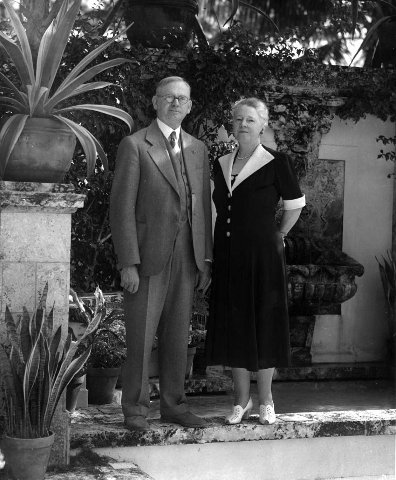
The Norton's founded the museum and donated their collection,.

Patrick Lannan brought contemporary art to Palm Beach

Kenneth C. Griffin donated money for expansion and works worth millions.
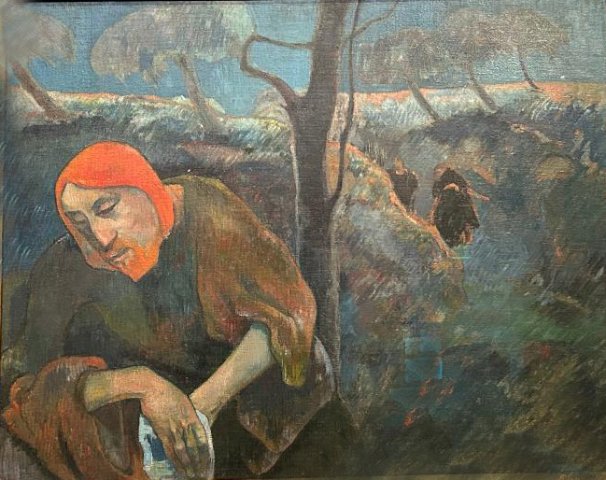
Gauguin Agony in the Garden,

PIcasso synthetic cubism.

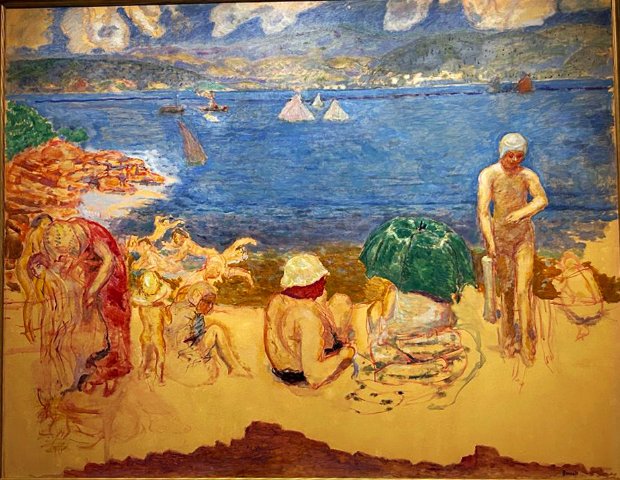
A sketchy work by Bonnard
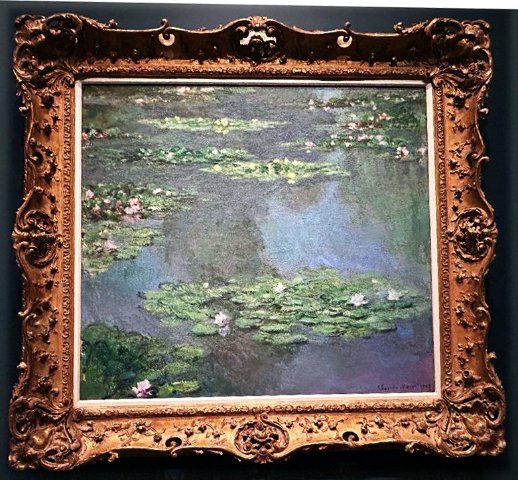

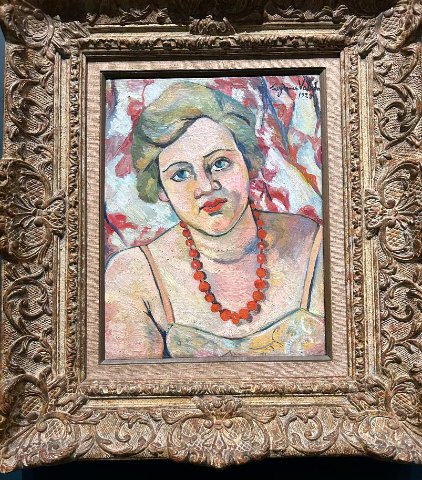
Woman by Suzanne Valadon.
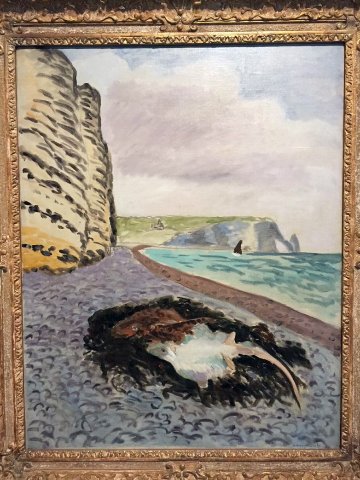
Matisse Ray Fish on Beach.
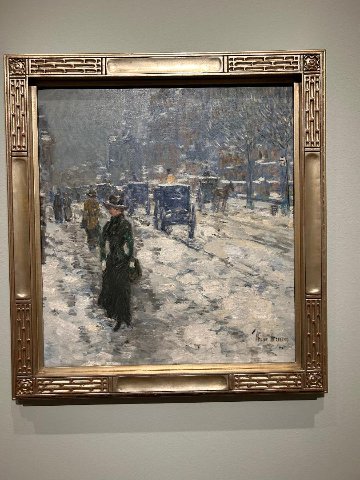
Childe Hassam NY in Winter,


Charles Demuth, After All, 1933.
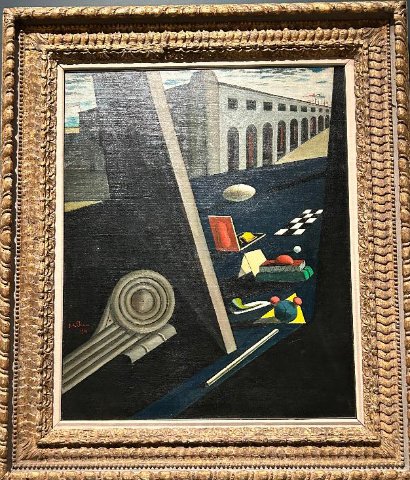
Di Chirico was used to illustrate surrealist publications.

Stuart Davis New York Mural.
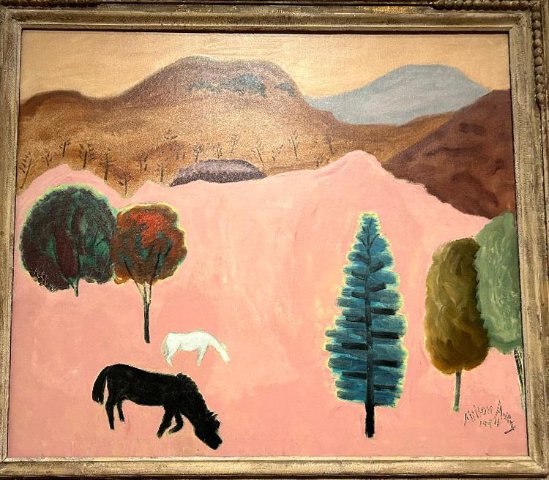
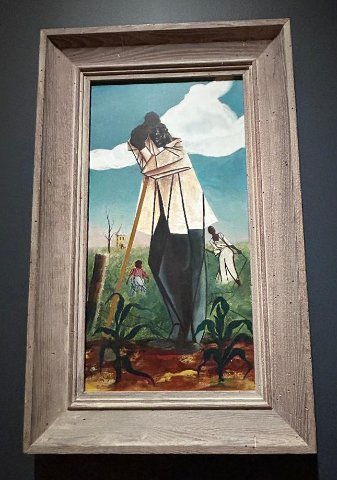
Robert Gwathmey Share Cropper.

Jacob Lawrence Man With Flowers

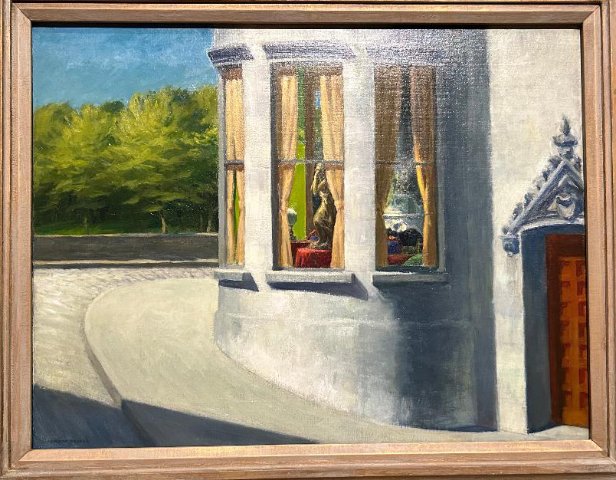
Edwards Hopper August in the City

Marsden Harttley Flounder and Blue Fish.


Gestural abstraction by Hans Hofmann
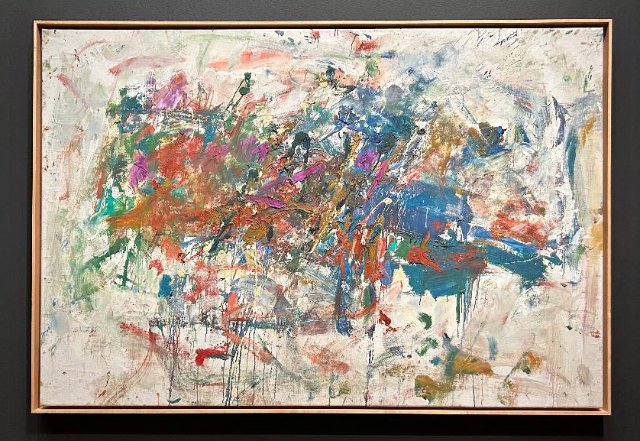
Abstract expressionist Joan Mitchell
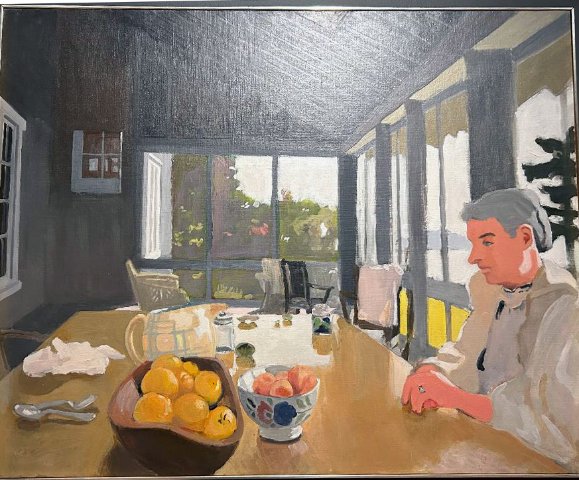
Maine scene by Fairfield Porter.
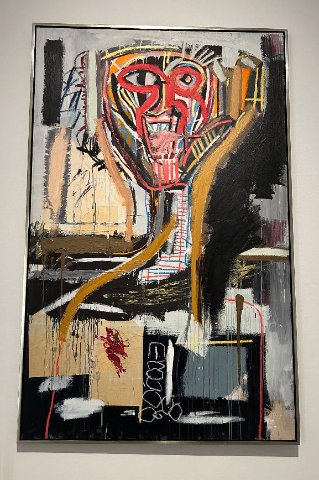
Jean Michelle Basquiat died young.

Custodian by Duane Hansen.
This past winter Astrid and I embarked on a month-long road trip. It concluded with several days in Palm Beach. It’s an area I am familiar with from when Mom had a condo there. I spent Christmas with her and returned in May to drive her home. Those travels entailed various Southern destinations.
In 2022, Palm Beach, FL had a population of 9.21k people with a median age of 70.7 and a median household income of $190,824. The county has some 44 billionaires of which 35 found themselves on the 39th Forbes 400 list. That’s roughly as many as Los Angeles. The county also has around 71,000 millionaire households.
One may party in Palm Beach with President Donald Trump at Mar y Lago. The initiation fee is $200,000 with $14,000 in annual dues. For many of its members that’s trump change.
Legendary charity balls are reported in the Palm Beach Daily News. It’s known locally as the Shiny Sheet.
For most of the mega wealthy Palm Beach is primarily a winter destination with a finite season. Until relatively recently it was not a cultural destination for major museums, opera, ballet, galleries and theatre. The wealthy residents relied on that back home which was also where their heart, soul and arts philanthropy resided. That has changed with the greatly expanded Norton Museum as well as the Kravis Center for the Performing Arts.
While the cultural offerings have greatly improved, truthfully, folks do not come to Florida for the arts. Perhaps that’s debatable considering Miami’s art fairs, or Sarasota with the renowned Ringling Museum. In recent years Norton has topped Ringling as the primary destination for the fine arts.
When I visited Mom in the 1980s there wasn’t much to do other than walk the beach. Over the bridge in Lake Worth there was a small and intriguing Lannan Museum in a former movie theater. One approached the modest but choice Norton Gallery flanked by life-size bronze sculpture by Cape Ann sculptor Paul Manship. There was a core of stunning post impressionist and modern works. I met with Christina Orr-Cahall who was then director of Norton. In D.C. she had been caught on the wrong side of the Robert Mapplethorpe scandal. I asked her about that.
Visits to Florida entailed lunch with former MFA curator Kenworth Moffett then director of the Fort Lauderdale Museum. Other than COBRA, there wasn’t an impressive permanent collection but the museum had interesting special exhibitions including a memorable one for Nam June Paik.
My sister Pip and I took a day trip to Miami to tour its colorful art deco district. The museums were not what they are now.
The Norton Museum of Art was founded in 1941 by Ralph Hubbard Norton (1875-1953) and his wife Elizabeth Calhoun Norton (1881-1947). Norton was an industrialist who headed the Acme Steel Company in Chicago. In 1935, they began to spend more time in the Palm Beaches. In 1940, construction began on the Norton Gallery and School of Art located between South Olive Avenue and South Dixie Highway in West Palm Beach. Marion Sims Wyeth of Wyeth, King & Johnson designed the Art Deco Museum which opened in1941. In 1953, the Nortons gave their large collection to the Museum. That’s what I saw during annual visits.
Our recent winter visit to the Norton Museum in both scale and quality was shocking. The Museum’s permanent collection now consists of more than 8,200 works in five curatorial departments: European, American, Chinese, Contemporary and Photography. Since 1954, there were endowed acquisitions including masterpieces; Stuart Davis’s New York Mural (acquired in 1964), and Jackson Pollock’s Night Mist (acquired in 1971).
In 2011, the Norton launched Recognition of Art by Women (RAW), an annual exhibition series that celebrates the contributions of living female painters and sculptors with solo exhibitions.
In 2012, the Norton instituted the Rudin Prize for Emerging Photographers, a biennial international award for deserving individuals who have not yet received a solo museum exhibition
In 2013, the trustees engaged London-based Lord Norman Foster to design a new building. The transformed Museum opened on Feb. 9, 2019, featuring the Kenneth C. Griffin Building, which includes 12,000 square feet of new gallery space; expanded classroom space; a larger student exhibition space; 210-seat auditorium; a new store, restaurant; and Great Hall. The expansion entailed a lawn for outdoor programming and a sculpture garden. The project also included the renovation of six Museum-owned, 1920s-era cottages to house an artist-in-residence program, and the Museum Director’s home.
Based on past experience, Astrid and I tried to park near the original entrance to the museum which is now closed. We had to find our way around the complex to the Dixie Highway side. Upon entrance to the Great Hall we immediately encountered an enormous painting by Anselm Kiefer. This was the first of numerous, knock-your-sock- off encounters.
There was a lot to take in, so much so, that it required returning for a second day. Our first visit focused on the ground floor and special exhibition galleries. We took a lunch break but it was enough for one day. Our return visit focused on the second floor including modern and old master galleries. Overall, we concluded that Norton is, for its scale, among the best American museums.
Part of which reflects the adage that if you build it they will come. Mostly that meant the arts community getting over its snow bird/ Shiny Sheet/ Trump vulgarity. Wealth, as we know, does not guarantee class and taste.
We encountered eye popping works by Pollock, Rothko, and tops of the pops. Much of that is credited to Billionaire art collector Ken Griffin who moved his masterpieces from the Art Institute of Chicago, where he is a trustee, to the Norton.
These include Mark Rothko’s No. 2 (Blue, Red and Green) (Yellow, Red, Blue on Blue), 1953, Roy Lichtenstein’s , Ohhh…Alright… (1964), an untitled Robert Ryman, Willem de Kooning’s abstract masterpiece Interchange, and Jackson Pollock’s Number 17A.
The collection is well represented by abstract expressionism with two works by Pollock. That said, Griffin was late to the party and overpaid for a good but not great painting. By comparison Pollock’s masterpiece, Lavender Mist, went to the National Gallery for about $1 million. There is a strong and representative Robert Motherwell, Personage, 1943, Mark Tobey, The Avenue, 1954, and Sam Francis, Untitled 1956 as well as works by Joan Mitchell, Sam Francis and Hans Hofmann.
The next generation of color field painting is represented by the Morris Louis veil painting, Autumnal, 1959 and Kenneth Noland’s Thrust, 1963. Early work by Louis was well represented at the Lannan Museum. Patrick Lannan (1938-2022) routinely bought the content of the studio including from Louis, Lester Johnson, Julian Schnabel and other artists. It allowed for seeing a period in depth. Walter Chrysler was another bulk collector.
In 1996 Lannan Foundation created a museum gift program, offering pieces from its collection of over 1,000 works of modern and contemporary art to U.S. museums and making these important works accessible to significantly larger and more diverse audiences. The program was designed to increase the exposure of, accessibility to, and scholarship on artists represented in the foundation’s holdings.
In 1986 the board of directors elected to relocate the foundation’s headquarters from Lake Worth, Florida, to Los Angeles, California. The Lannan Museum in Lake Worth was donated to Palm Beach Community College.
In 1994 Lannan initiated the Indigenous Communities Program to address the urgent needs of rural Native American communities. Funding priority is given to projects that are consistent with traditional values, in the areas of education, Native cultures, the revival and preservation of languages, legal rights, and environmental protection.
Between January 1996 and August 2000 over 1,000 drawings, paintings, photographs, prints, sculptures and video installations were given to 78 museums in twenty-six states, the District of Columbia, and Mexico. The gift program was designed to match works with institutions where the pieces would become an active part of the collection. In fall 2000 Lannan Foundation decided to sell a group of twenty-three works at Sotheby’s to support ongoing acquisitions and projects in contemporary art.
Griffin bought the Norton’s de Kooning from David Geffen for $300 million, and the Pollock for $200 million. Both of these works were displayed at the Art Institute before quietly being taken down.
Other notable art purchases by Griffin include a Cézanne that cost $60.5 million, a Jasper Johns for $80 million, a Jean-Michel Basquiat at $100 million, and a Barnett Newman costing $84.2 million. The sum paid for the Newman set a new record for the Abstract Expressionist. Griffin heads the hedge fund Citadel. Over the past decade Griffin, a Harvard grad (1989), has spent $350 million on property in Palm Beach.
In 2018, Griffin donated $20 million to the Norton, earning him naming rights to the new wing and endowing the museum’s director. The Norton displays three of the collector’s earliest acquisitions: the Edgar Degas painting Dancers in Green, the Degas sculpture Little Dancer, Aged Fourteen, and a Claude Monet water lilies painting.
There is much to absorb and admire. An old friend was Paul Gauguin’s symbolist work, Agony in the Garden, 1889, from his Pont Aven period in Brittany. The red headed Christ figure on the left part of the composition evokes the abstracted features of the artist. It’s a solitary moment as the disciples are dwarfed in the distance. Peter is seen with a drawn sword defending Christ. The work has emblematic pathos.
Joaquín Sorolla y Bastida (1863-1923) a “master of light” was revered in Spain as that nation’s last great traditional painter. By 1900 he had become one of Europe’s leading artists. Though he lived in Madrid, he returned often to his native Valencia, a town on the southeast coast where he painted beach scenes focused on the study of light. There he depicted fishermen maneuvering teams of oxen to beach their boats at the end of day. The scene captured in a monumental canvas of 1903, Beaching the Boat (Afternoon Light), is on loan from the Hispanic Society of America for two years displayed with two works by Sorolla from the Norton’s collection, Child on a Beach and Portrait of Enrique Recio y Gil.
The Portrait of Paul Hauge, ca. 1899 is a half figure rendering of a man in a three piece suit is a representative work by Paul Cezanne. When it was purchased by Norton it was titled Portrait of the Artist’s Son.
Another familiar favorite is Large Cliff; The Two Rays by Henri Matisse, 1920. The cliffs of Etretat soar over the two fish on the beach. The painting, created in a sketchy manner, is for me an enigma. Just what do the rays mean in this elaborate setting? The museum also owns his Portrait a la Toque de Velours (Marguerite Matisse) 1919 the daughter of the artist.
Chaim Soutine is an underappreciated artist. While considered School of Paris he brought an expressionist edge to paintings such as the Norton’s skittish Portrait of Maria Lani, 1928, and a loose, vibrantly rendered, dark landscape.
From 1914 the work by Giorgio de Chirico The Sailor’s Barracks is a stunning example from his Metaphysical Period. With hauntingly poetic classical references it preceded the development of surrealism which was codified in 1924. The movement leader, Andre Breton, often used his images to illustrate surrealist publications.
There are a number of cubist works by Picasso, Braque and Leger. In particular, I find the pastel Picasso, Au Café, 1901 from Picasso’s Lautrec period, particularly rare, delicate and evocative. Here we see the artist in embryo learning from his elders.
La Plage de Sainte Tropez, 1932-1934, by Pierre Bonnard, is a large, sketchy, post impressionist painting that evokes a summer day at the beach. There are loosely rendered bathers in the foreground and sailboats in the middle distance. It’s an utterly charming work that is always a delight to revisit.
The Norton has a great work by Georgia O’Keeffe in Ranchos Church No. 1, 1929. It was my pleasure some years ago to stand before the iconic adobe church in New Mexico. She abstracted the simple, generic structure into a timeless monument. This work represents her exploration of the cusp between representation and abstraction.
The Marsden Hartley, Flounders and Blue Fish, 1942, is a small and easily overlooked still life. It’s not a great work in the oeuvre of the artist but worthy of our attention and admiration for its simplicity and humanity.
There’s a lesser known but wonderful work by Edward Hopper, August in the City, 1945. It’s an odd, cropped view of a curved building on a corner. There is the hint of a door with an ornate Gothic trim. To the left we see across the street and trees in the park. Our attention is voyeuristically drawn to glimpses of a woman in the interior. The narrative here is more oblique than usual.
Visitors are taken aback by a maintenance worker leaning against a wall. Upon further observation he does not move. It’s tempting to stop and chat with the trompe l’oeil sculpture by Duane Hansen. In a similar mode are two heads of polychrome Harlem teens by John Ahearn.
I love Childe Hassam’s 1889 View of Gloucester Harbor. The exact spot in East Gloucester where he painted it resides deep in my DNA. It was moving to encounter home away from home. It’s one of his great pictures. And a nice last thought about visiting the sumptuous Norton Museum.






























